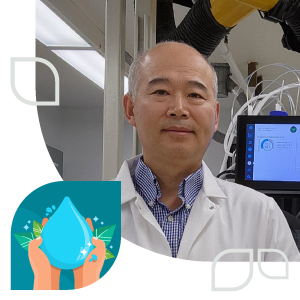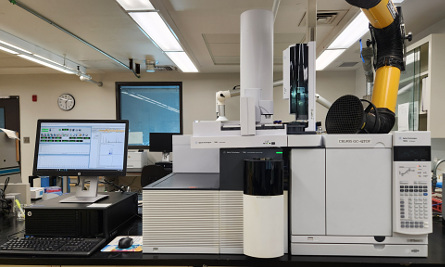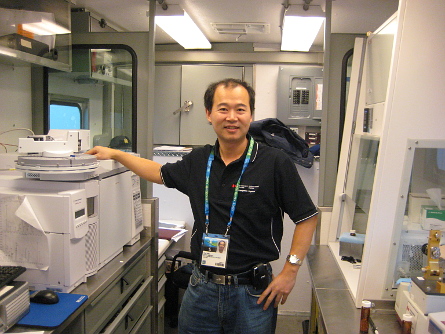Finding answers through environmental forensics
Profile of Chun Yang
Finding answers through environmental forensics

Chun Yang has been with Environment and Climate Change Canada (ECCC) since 2002. As the lead for chemicals research out of the Oil Analysis Lab, he helps advance our knowledge of toxic industrial chemicals and their impact on the environment, while supporting environmental emergency response through his work on oil fingerprinting and environmental forensic science.
The unique fingerprints of oil
It's a career path that began back in 1992, when Chun graduated from Beijing Normal University and began working in analytical chemistry at the Research Centre for Eco-Environmental Sciences with the Chinese Academy of Sciences. Looking to learn more, Chun pursued a master's degree and then a PhD in analytical chemistry and environmental processes.
While his studies involved analyzing organic compounds like polychlorinated biphenyls (PCBs), or studying wastewater treatment methods to conserve freshwater resources, it was the move to ECCC that led Chun to environmental forensic science.
“After I came to Canada, I joined the department's Emergencies Sciences and Technology Section and had the opportunity to work with Dr. Zhendi Wang,” Chun explained. “He was the top scientist for environmental forensic science before passing away a couple of years ago. Before I joined Dr. Zhendi Wang's team, I had very little knowledge of oil”, Chun added.
The field was only just evolving when Chun started his work with Dr. Wang, studying and analyzing different types of oils and oil products to understand each oil's “fingerprint” and how it behaves. The work helped them answer environmental emergency responders' questions about spills: what substance spilled, how did it happen, what were the effects on the environment and how toxic could it be? At times, it also allowed them to trace oil back to its source to determine who was responsible for the spill.
How does oil “fingerprinting” work?
Petroleum, or oil, is an extremely complex combination of hydrocarbons, metals, sediment, water and compounds of nitrogen, oxygen and sulfur. Due to the variety of materials, age, and geological conditions under which it was formed, every crude oil has a unique chemical composition, known as a fingerprint.
Oil fingerprinting works by identifying the unique make-up of an oil and understanding how it can change over time in the environment. Some compounds in oil change very little despite exposure to the elements, allowing scientists to trace the origin of the oil.
New oils and new fingerprints

In 2020, the International Maritime Organization introduced new regulations limiting the sulfur content in marine fuels to reduce emissions from shipping. Ships now use newer very low or ultra-low sulfur fuel oils to meet these standards.
“Now more spills involve this new type of fuel oil, especially in the sea”, Chun noted. “The challenge is this oil is more refined through deeper de-sulfurization, which changes the fingerprint compared to conventional oil.”
Under the Oceans Protection Plan, which is a series of Government of Canada initiatives that aim to protect Canada’s marine ecosystems and wildlife, Chun and his team are studying the chemical and physical properties, behaviour and toxicity of this new type of oil.
“Because we do forensic studies, we rely on—just like the police—many different technologies,” Chun added. “One of these gathers chemical information from the oil. So how do we analyze this information to understand the environmental behaviour of these oils?”
For very low and ultra-low sulfur fuel oils, which contain significantly less materials typically used as markers for oil fingerprinting, Chun and his team are turning to emerging technologies like high-resolution mass spectrometers to begin answering these questions.
A career for life

When Chun first started working on oil fingerprinting back in 2002, he found it incredibly interesting—which fit with advice he’d been given as a young scientist.
“I remember just after I joined the research centre, my senior scientist asked me if I wanted my job to just be a job, or if I wanted it to be my life’s career.” Chun said, reflecting. “To be a scientist is more than a job, it is a lifetime commitment. You need patience, you need to overcome a lot of frustration.”
Heeding this advice, Chun has always focused on loving what he does, “I’m very proud and very appreciative of the chance to be part of Environment and Climate Change Canada, and to make a contribution for cleaner, better, and safer environment.”